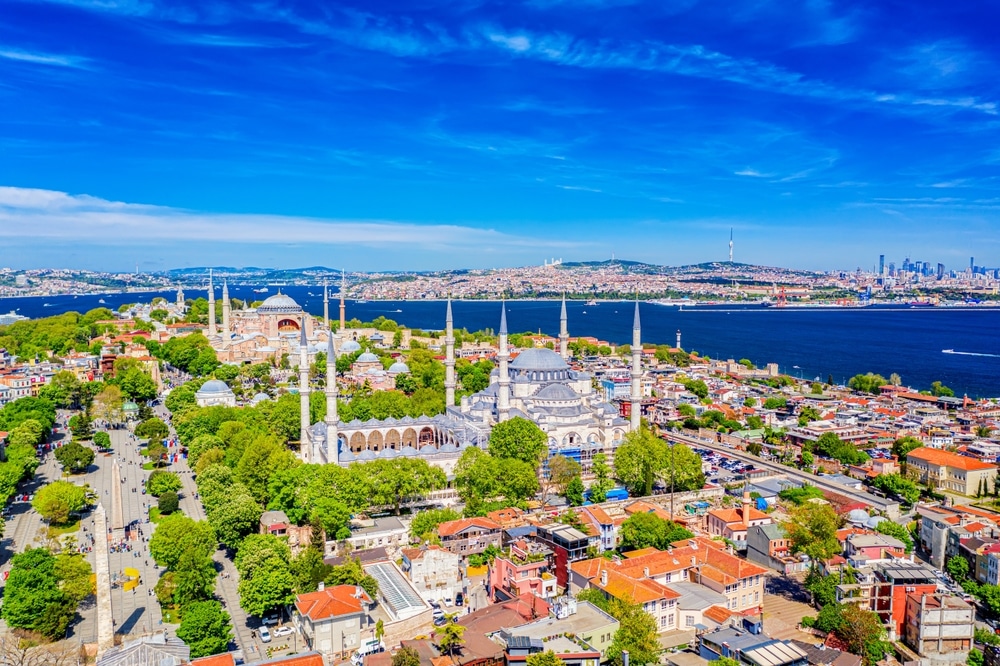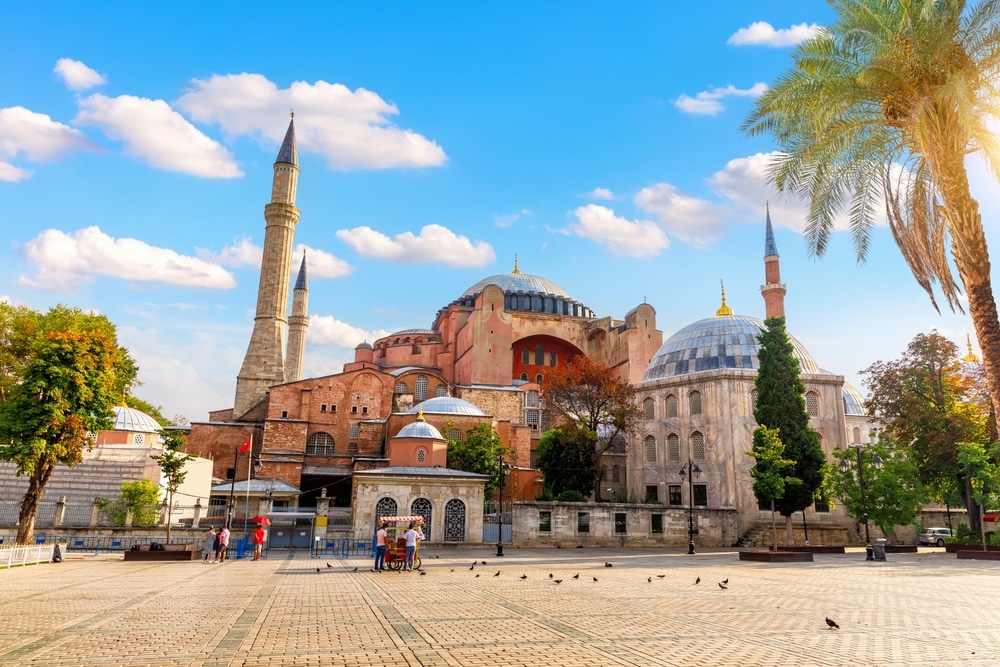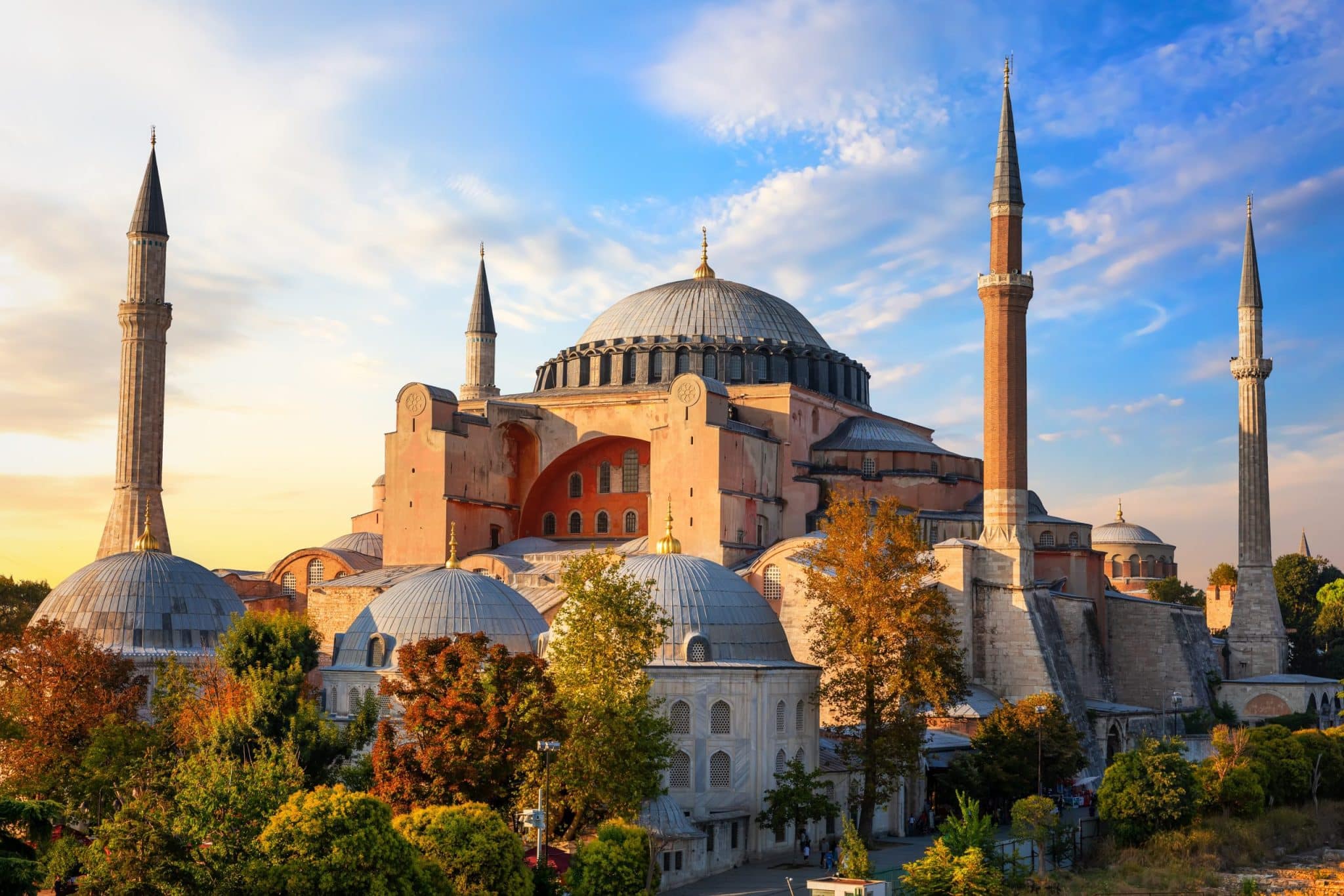Hagia Sophia and Blue Mosque: Differences, Things to Know & Combo Tickets
If you're planning a trip to Istanbul, two of the most iconic landmarks you'll hear about are Hagia Sophia and Blue Mosque.
With their grand domes, minarets, and rich histories, it's easy to see why travelers often confuse the two. Are they the same? Which one should you visit first? Can you see both in one day?
Let’s break it down.

Are Hagia Sophia and Blue Mosque the Same?
No, they’re not the same — though they do share a lot in common. Located just a few hundred meters apart in Istanbul’s Sultanahmet district, Hagia Sophia and Blue Mosque have become symbols of the city. But they’re two distinct buildings with very different stories.
- Hagia Sophia was originally built in 537 AD as a Byzantine cathedral, later converted into a mosque, then a museum, and recently reconverted into a mosque in 2020.
- The Blue Mosque (officially Sultan Ahmed Mosque) was built in the early 1600s as an Ottoman imperial mosque and still functions as one today.
So while both are active mosques now, they were built nearly a thousand years apart and reflect different eras of Istanbul’s past.
>> Visit here to learn more about the history of Hagia Sophia
Difference Between Hagia Sophia and Blue Mosque
While both landmarks are impressive, their differences are easy to spot once inside.
Hagia Sophia presents a more historical and architectural journey. Visitors are struck by the scale of its dome, the remains of Christian mosaics, marble pillars, and Arabic calligraphy. It feels more like a historical monument, layered with stories from different eras.
In contrast, the Blue Mosque offers a more serene and unified space. Its symmetry, cascading domes, and richly tiled interior give it a unique charm. With its six minarets — an unusual feature when it was built — the mosque was meant to assert the prestige of the Ottoman Empire.
Visitors often describe Hagia Sophia as “monumental” and the Blue Mosque as “graceful.” Both are beautiful, but in very different ways.
>> Learn more about the interior details of Hagia SophiaYear of Construction
Hagia Sophia: 537 AD
Blue Mosque: 1609–1616 AD
Architecture
Hagia Sophia: Byzantine design, later adapted by the Ottomans
Blue Mosque: Classical Ottoman style with blue İznik tiles
Original Purpose
Hagia Sophia: Built as a Christian cathedral
Blue Mosque: Built as an imperial Ottoman mosque
Entry Rules
Hagia Sophia: Ticket required for tourists
Blue Mosque: Free to enter

Distance Between Hagia Sophia and Blue Mosque
One of the most convenient aspects of visiting Hagia Sophia and Blue Mosque is how close they are to each other. Both are located in Istanbul’s historic Sultanahmet district, with only a large pedestrian plaza — Sultanahmet Square — separating them.
- Walking distance: About 250 meters (roughly 3–4 minutes on foot)
- Route: Simply exit one building, cross the square, and you’ll find yourself at the entrance of the other.
- Accessibility: The area is flat and paved, making it walkable even for families, seniors, or those with mobility concerns.
Because of this, many visitors choose to explore both landmarks back-to-back, often within the same morning or afternoon. The proximity makes them ideal for walking tours that also include nearby landmarks like the Basilica Cistern and Topkapi Palace.
*Visit early in the day to avoid crowds, especially during peak seasons. Early mornings also offer softer light for photos and a quieter atmosphere.Hagia Sophia and Blue Mosque Combo Tickets
Most Popular Combo Ticket
Discover the spiritual and architectural wonders of Istanbul on a guided tour of the Blue Mosque and Hagia Sophia. Enjoy skip-the-line access, insightful commentary from a licensed guide, and a deep dive into the rich history of these two world-famous landmarks. + more details

Hagia Sophia or Blue Mosque: Which Should You Visit First?
Since both landmarks are located just a few minutes apart in Sultanahmet, you can easily visit them in one trip. However, if you only have time for one of these two, we recommend visiting Hagia Sophia.
If you’re planning to visit both, it’s generally recommended to start with the Blue Mosque, as it is often closed to tourists during prayer times. Visiting early in the morning gives you the best chance of seeing it without interruptions and before large tour groups arrive.
>> Explore Blue Mosque tickets & tours here.
Afterward, you can make your way to Hagia Sophia, where you can spend more time exploring the architectural details, historical layers, and viewing areas. Since entry now requires a ticket, there may be queues — so booking ahead or joining a guided tour can be a time-saver.
FAQ About Hagia Sophia and Blue Mosque
No — they’re different landmarks. Hagia Sophia was a Byzantine church turned mosque, while the Blue Mosque has always been an Ottoman mosque. >> Check Hagia Sophia & Blue Mosque combo tickets here.
No, Hagia Sophia is larger and feels more spacious. The Blue Mosque is slightly smaller but more symmetrical. >> Learn more about the architecture of Hagia Sophia.
Both are worth visiting. Hagia Sophia offers layered history, while the Blue Mosque is known for its elegant design and calm atmosphere. >> Click here to learn more about Hagia Sophia.
Final Thoughts: Visit Both to Understand Istanbul
Choosing between Hagia Sophia and Blue Mosque is unnecessary — the best way to experience Istanbul’s rich past is to visit both. Together, they represent the city’s layered cultural, architectural, and religious history. One tells the story of empires rising and falling, the other continues a centuries-old tradition of worship and elegance.
Whether you go independently or join a guided tour, these two landmarks will likely be the most memorable part of your visit to Istanbul.

